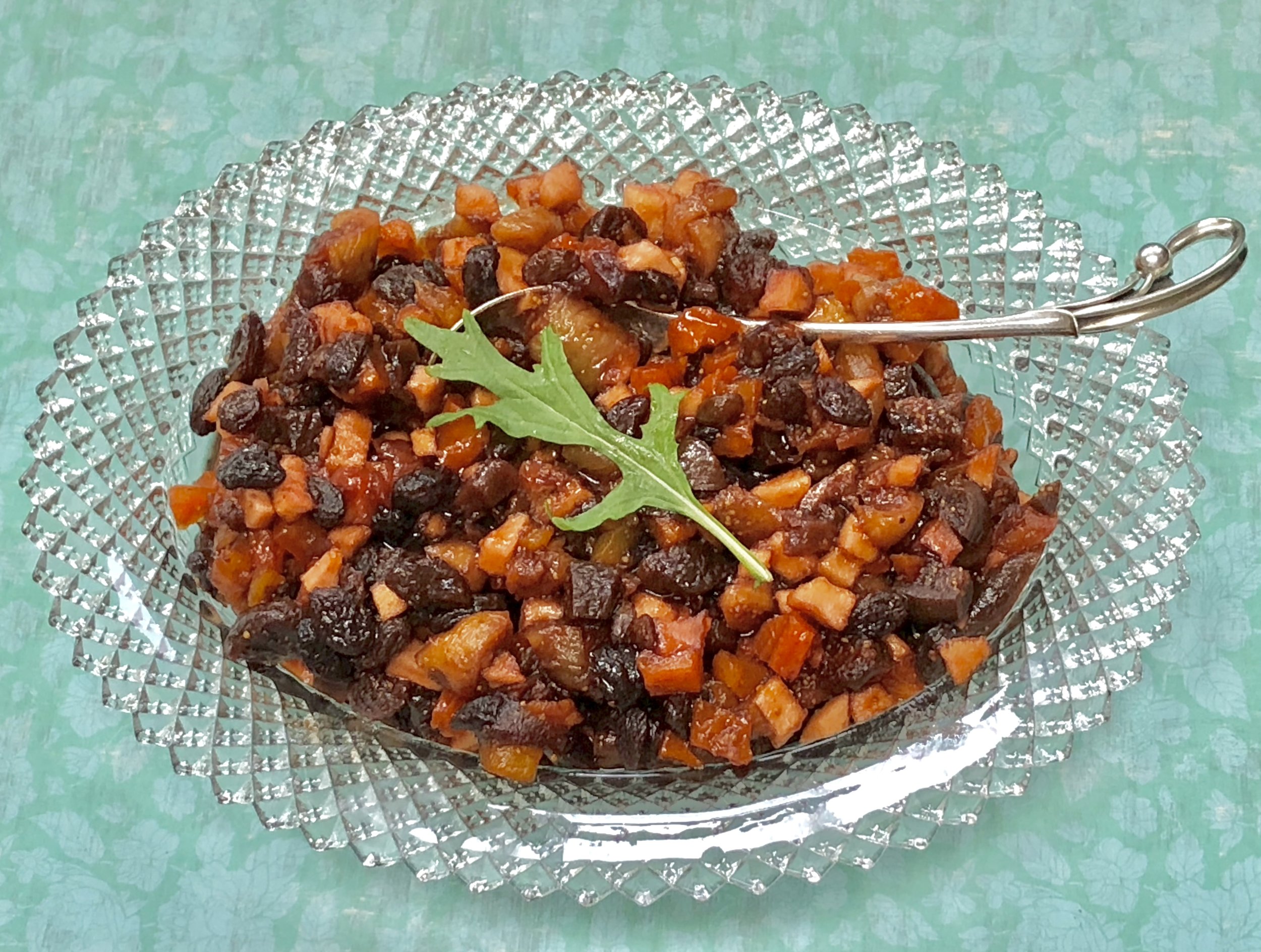When I was growing up the Seder charoset was used symbolically only. My grandmother, and in later years my mother, would grate an apple or two, mix it with some walnuts and Manischewitz concord grape wine and that was that. It always turned brown and didn’t look very appetizing and we ate it only as commanded during the reading of the Haggadah.
Then, several years ago, charoset became a big deal. It was now expected to taste good, look good and be eaten like a side dish, the way we eat cranberry sauce or apple sauce.
And so, I stopped making the apple mush. Instead, over the years, I’ve made Persian versions, nut-free versions, coconut charosets and all sorts of others, based on different ethnicities.
This year I am making my special COVID19 jumble, made with what I have on hand in the way of dried fruit (plus an orange, which I always have in the fridge.
Should I call it Quarantine Charoset, Pantry Charoset or simply Completely Made Up Charoset?
I don’t use any nuts because of allergies, but you can add 1/3-1/2 cup of chopped nuts (any kind) to this recipe if you have some in your pantry.
Quarantine Charoset or Pantry Charoset or Completely Made-up Charoset
1-1/2 cups chopped dates
1 cup chop dried figs
1 cup chopped dried apricots
1/2 cup raisins
1 fresh apple, peeled and chopped
1/2 cup pomegranate jam (or any jam you have)
1/3 cup Passover wine (preferably Concord grape)
1/4 cup orange juice
1 teaspoon grated fresh orange peel
Place the dates, figs, apricots, raisins and apple in a bowl and toss the fruit to distribute the pieces evenly. Add the pomegranate jam and stir to coat the fruit. Pour in the wine and orange juice; add the orange peel. Toss the ingredients. Let rest for at least one hour before serving.
Makes about 5 cups
